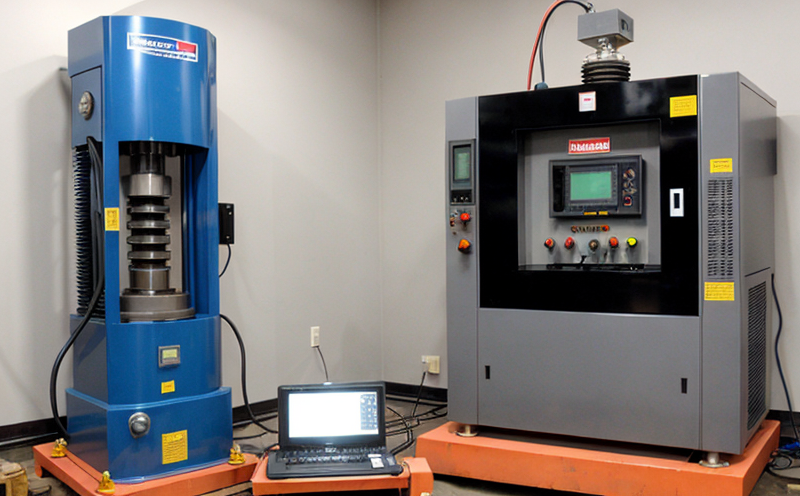RTCA DO 160 Section 8 Shock Test
The RTCA DO 160 Section 8 Shock Test is a critical phase in aerospace and defense electronics certification, ensuring that electronic components can withstand the harsh environmental conditions they may face during deployment. This test evaluates a device's ability to survive mechanical shock without compromising its functionality or integrity.
RTCA/DO-160, developed by the Radio Technical Commission for Aeronautics (RTCA), is an industry-standard document that specifies various environmental testing procedures for airborne electronic equipment. Section 8 specifically addresses shock and vibration tests, which are essential for aerospace applications where mechanical stress can occur due to takeoff, landing, turbulence, or other flight conditions.
The test involves subjecting the component under test (CUT) to a series of predetermined shock pulses that simulate real-world scenarios. The goal is to ensure that the electronic device performs reliably even after experiencing these shocks. Compliance with this standard is often required for products intended for use in aircraft, spacecraft, and other aerospace applications.
The testing process typically involves several stages: initial inspection, mounting the CUT on a suitable fixture, applying the shock pulses using specialized equipment like shakers or drop towers, and finally inspecting the device post-test. The test parameters are meticulously defined to replicate actual operational environments as closely as possible.
During the test, it is crucial that the CUT remains securely mounted throughout the process to avoid additional stresses not related to the intended shock stimuli. Once testing is complete, any visible signs of damage or malfunction must be documented and reported according to specified guidelines.
The results from these tests play a vital role in ensuring product reliability and safety, particularly for mission-critical systems where failures could have severe consequences. By adhering to RTCA DO-160 Section 8, manufacturers can demonstrate their commitment to quality and compliance with industry best practices.
Quality and Reliability Assurance
- Ensures compliance with international standards such as RTCA/DO-160 and MIL-STD-810G.
- Provides objective data for decision-making in product development and improvement.
- Aids in identifying potential weaknesses early on, allowing for corrective actions before mass production begins.
- Supports continuous improvement efforts by providing insights into how different materials or designs perform under stress conditions.
The mechanical shock testing process is part of a comprehensive quality assurance program aimed at enhancing product reliability and ensuring that components meet stringent performance criteria. By incorporating this test early in the development cycle, companies can mitigate risks associated with unexpected failures during critical operations.
Competitive Advantage and Market Impact
Adhering to RTCA DO-160 Section 8 Shock Test standards offers several advantages for manufacturers operating within the aerospace industry. Firstly, it enhances credibility among customers who require high levels of assurance regarding product performance under adverse conditions. Secondly, compliance helps reduce liability risks by minimizing the chances of warranty claims or recalls due to shock-related issues.
From a competitive standpoint, meeting these stringent requirements can set products apart from competitors, potentially leading to increased market share and customer loyalty. Additionally, successful completion of such tests serves as a benchmark for quality, attracting more sophisticated buyers who value robust engineering practices.
Use Cases and Application Examples
| Application | Description | Shock Pulse Characteristics |
|---|---|---|
| Aircraft Instrumentation | Instruments used for navigation, communication, and safety systems. | Pulse amplitude: ±15g; Duration: 2ms; Repeatability: 3 pulses per axis. |
| Spacecraft Avionics | Electronic systems responsible for spacecraft control and mission execution. | Pulse amplitude: ±40g; Duration: 1.5ms; Repetition: multiple cycles with varying magnitudes. |
| Missile Guidance Electronics | Systems that provide accurate guidance throughout the missile’s flight path. | Pulse amplitude: ±60g; Duration: 2ms; Frequency range: 5-10 Hz. |
The above table illustrates some common applications of RTCA DO-160 Section 8 Shock Testing and the corresponding shock pulse characteristics associated with each. These parameters are designed to simulate realistic flight conditions, thereby providing a robust measure of electronic component resilience.





